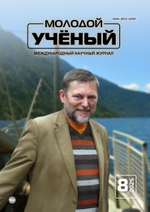The article deals with the speech symptomы of dysarthria, the relevance and correction of the speech defect, the reasons for the emergence and elimination of dysarthric disorder. The author notes that children with dysarthria have deviations, primarily in speech and motor skills. They have impaired memory, attention, thinking, finger and articulation motor skills. Also raises the question of complex inclusion of children with dysarthria in the general educational environment, adaptation and socialization of children with this disorder. It also includes effective teaching and education by methods and techniques of inclusive education, as well as specialized conditions of the educational process for children with dysarthria in the framework of general modern inclusive education.
Key words: dysarthria, speech, speech correction, games for dysarthriacs.
The most necessary ability for a person is his speech. From an early age, the child needs to form a correct speech, it allows children to easily enter into communication, express their thoughts and desires. However, poorly developed speech prevents socialization. At an older age, the child may already notice speech defects, which can make him or her more withdrawn and shy. [7, с. 24]
On how early or late identified speech defects, when speech therapy work with a child suffering from a speech disorder depends largely on the result of correction of speech defects. In modern speech therapy, the issues of diagnosis of dysarthria remain controversial. Unfortunately, the problem of early speech therapy impact is still not always find understanding of pediatricians, not always and parents who have children with developmental problems from 0 to one year turn for help to speech pathologist-defectologist. Logopedic help, at an early age, doesn’t turn out practically, because children under three years old usually do not attend kindergartens, and medical institutions do not provide such assistance. Exactly at this age it is necessary to create conditions for the normalization of speech and mental development of the child. [1, с. 4] Early speech development and problems of defectology were engaged in such figures as: Vinarskaya E. N., Gvozdev A. N., Arkhipova E. F. The lack of humming, babbling and motor reactions in a child under one year of age require pedagogical correction by a speech pathologist-defectologist. However the early detection of dysarthric disorders and early correction work of a speech pathologist-defectologist will certainly give positive results in the dynamics of the child's speech development.
All of the above allows us to call the problem of speech disorders in children with dysarthria extremely relevant . Of undoubted interest is also speech therapy correction work with children with dysarthric disorders.
The object of the scientific article is the speech of preschool children with dysarthria.
Subject — games, exercises aimed at overcoming the speech defect «dysarthria».
Dysarthria is a disorder of the pronunciation of speech due to insufficient innervation of the speech apparatus.
The scientific description of dysarthria was first presented in 1853 by the German neurologist Littl. Against the background of brain damage in children with cerebral palsy, he noted specific speech disorders characteristic of dysarthria. A little later, in 1879, A. Kussmaul a German clinician, distinguished the concept of an organic «eloquence», which refers to one of the forms of central, organically caused speech disorders. He also introduced the term «dysarthria». [4, с. 3]
In this speech defect, general motor skills are impaired, as well as other processes of motor realization of speech activity: voice, facial expressions, melodic-intonation side of speech, as well as fine and articulation motor skills.
Causes of dysarthria:
– organic damage to the central and peripheral nervous system under the influence of various unfavorable factors affecting the intrauterine period, at the time of delivery and after birth;
– asphyxia;
– birth trauma;
– hemolytic disease;
– cerebral circulatory collapse;
– infectious diseases of the nervous system;
– a brain tumor;
– underdevelopment (aplasia) of the nuclei of the cranial nerves;
– hereditary diseases of the nervous system, malformations. [2, с. 17]
Dysarthria can be both congenital and acquired. Dysarthria is formed due to an insufficient supply of nerve endings to the organs of the speech apparatus. The connection between the organs of speech and the central nervous system deteriorates, and the child has difficulty incorrectly pronouncing sounds.
The main manifestations of dysarthria in a child: defects in sound pronunciation (vowel sounds may be violated), violation of vocalization, speech motor skills, muscle tone, speech breathing, changes in rhythm, tempo and intonation, hypersolivation.
There are several forms of dysarthria -
– bulbar dysarthria;
– pseudobulbar dysarthria;
– subcortical (extrapyramidal) dysarthria;
– cortical dysarthria;
– cerebellar dysarthria.
Bulbar dysarthria is a consequence of damage to the bulbar group of cranial nerves: lingual, vagus and hyoid. It is characterized by weakness of the articulation muscles, decreased muscle tone. As a result, speech is slurred, extremely slow, and facial expressions are impoverished. [2, с. 18]
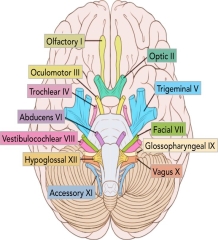
Pseudobulbar dysarthria is noted in bilateral lesions of motor cortical-nuclear pathways connecting the cranial nerve nuclei of the brainstem with the cortex. It is characterized by the inability to organize clear rhythmic movements. In early childhood, such a child often farts and chews with difficulty. At an older age a number of problems with speech are detected due to poor mobility of articulation muscles, speech is extremely slurred. [2, с. 20]
Subcortical dysarthria occurs in lesions of the subcortical nodes of the brain. It is characterized by the presence of hyperkinesis — violent facial movements uncontrolled by the child. Muscle tone changes from normal to elevated. Tempo-rhythmic organization of speech is affected.
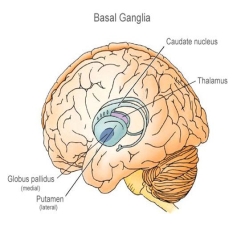
Cortical dysarthria is associated with damage to the cerebral cortex, namely the lower anterior central gyrus of one or both hemispheres. Cortical dysarthria is also diagnosed when the dominant hemisphere (left hemisphere for right-handers, right hemisphere for left-handers) is affected in the lower post central cortex. Children with this form are not bad at mastering the isolated pronunciation of sounds, but they use them with great difficulty in the flow of speech, sometimes missing them altogether.
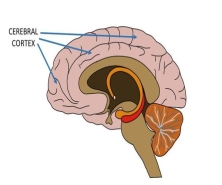
Cerebellar dysarthria is observed when the cerebellum or its connections with other structures of the nervous system are affected. It is characterized by chanted, «chopped» speech. There is no smooth transition from one word to another. [2, с. 19]
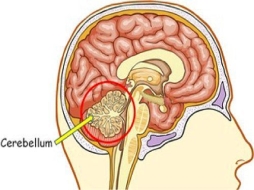
Classification of dysarthria by severity divides it into erased dysarthria, mild dysarthria, moderate dysarthria and severe dysarthria.
Mild dysarthria is a pathology in which there are mild nerve conduction disorders of the organs of articulation. Patients have mild disorders of sound production and accent placement defects. Speech in severe dysarthria is unclear and inexpressive, there are difficulties with sound reproduction of certain phonetic groups, with their automation.
Depending on the localization of the focus of clinical manifestations differ. In sterile cortical dysarthria, only phonetics is disturbed, with preservation of phone mics and correctness of accent, as only the area of the cortical center is affected.
Erased dysarthria of mild degree is characterized by minimal manifestations of defects in pronunciation and accent and quite often goes unnoticed. [4, с. 11]
The first signs of dysarthria don’t show us gross disorders, articulation motor skills are imprecise and slow. Speech is understandable, but the defect is noticeable. Communication is impaired. Patients prefer to talk using short words and sentences. Neurotic disorders are not uncommon due to the speech defect.
There are no gross defects in mastication and swallowing, but there is occasional choking and coughing. The patient's facial expressions are usually intact.
Medium severity of dysarthria is already characterized by gross defects in pronunciation, facial expressions, chewing and swallowing. Speech in this degree of dysarthria becomes unintelligible, blurred, incomprehensible.
The facial expressions of a patient with moderate dysarthria are scanty. In most cases, salivation is observed. Eating is difficult due to defects in chewing and swallowing.
In severe dysarthria, sounds production function is completely or almost completely absent.
Severe dysarthria is characterized by the absence of speech function, mask-like facial expression, salivation, gross disorders of chewing and swallowing. The patient's mouth is open all the time, the tongue does not move.
The number of children with dysarthria increases every year. Most of them have deviations in the phonetic-phonemic side of speech. Correction of these disorders is a large and difficult process in which it is necessary to take into account the characteristics of the child, constant systematic qualified assistance is necessary. [4, с. 11]
Underdevelopment of pronunciation has an extremely negative impact on the further education of the child, which subsequently leads to a general underdevelopment of speech. This speech disorder should be noticed as soon as possible in preschool age, and begin work on its elimination. At school age, such deviations lead to a violation of reading and writing. To correct this disorder is possible through timely and quality speech therapy, as well as additionally through therapeutic measures.
In overcoming speech impairment, the social significance of speech plays an important role. The ways of correction depend on the severity of the disorder, and on understanding the mechanism and its impact on all systems. It allows the most effective remedies to be selected.
Children with dysarthria face disorders in orientation and space. There are disorders in static and dynamic coordination of movements. Fine motor skills are poorly developed. There are violations in switching from one hand movement to another hand movement. It is worth noting that children with dysarthria meet with stiffness of movements, as well as a violation of the pace of performance. Mimic motor skills in children with dysarthria are developed, but isolated violations are noted. There are violations of the phonemic part of speech, as well as speech is monotonous. Children with dysarthria have mixed breathing and exhalation is shortened.
Speech therapy work to correct dysarthria is based on the following principles: systematic, taking into account the mechanisms of the disorder, reliance on the regularities of ontogenetic development, taking into account the nearest zone of development, gradual formation of mental actions, taking into account the leading activities of age, differentiated approach. The basis of which allows you to clearly and correctly compose speech therapy work.
The main task of correcting the pronunciation of dysarthric children is to achieve differentiated pronunciation. The main cause of pronunciation defects is complete or partial immobility of the speech apparatus organs. The therapist should be attentive and be directed to the development of mobility of the articulatory apparatus. [1, с. 82]
Р. I. Martynova noted that children with dysarthria are more active and attentive at the beginning of the class than at the end. She examined the higher mental functions of such children (perception, memory, thinking) using the “Binet and Decedre” tests. During the examination the subjects gave inaccurate answers. A decrease in the volume of memory by ear, slowed down thinking processes, and insufficient perception of the presented object were detected.
Logopedic work with dysarthric children is based on knowledge of the structure of speech defects in different forms of dysarthria, mechanisms of general and speech motor disorders, taking into account the personal characteristics of children. [5, с. 1]
In the age of digital informatization, one of the promising means of working with such children is the use of information technologies. In the learning process they allow to form cognitive abilities and skills of children, to make lessons the most colorful and effective for learning and development of dizartry children, to use more visual material, as well as contribute to the formation of the necessary competencies of students. The introduction of special computer programs into the correctional-educational process systematically and purposefully, help in activating children's concentration and attention, memory and thinking development. They allow to develop phonemic hearing and phonemic perception, expand vocabulary, increase speech activity, form skills of correct and literate speech. [6, с. 283–285]
The use of information technology opens up new, unexplored options for learning, which are connected with the unique capabilities of modern electronics and telecommunications. A speech pathologist can use computer material both in her own classes and recommend the use of these programs to parents when home-schooling.
Computer programs developed specifically for speech pathologists are educational and developmental in nature. In his work, a speech pathologist can use such programs as: developmental portal «Mersibo», «Develop for Kids» from the series «Learning with Adventure», «Game Factory», «Merry ABC», «Games for Tigra», «Learning to Speak Correctly». These programs are intended for the correction of sound pronunciation and development of phonemic processes in children of the preparatory group of kindergarten. They will also help to organize individual and subgroup work with children in an effective and interesting way.
Information technology allows speech pathologists to independently create and use multimedia presentations, game exercises and tasks, taking into account the age, educational needs and individual characteristics of each child and the whole group. The use of colorful pictures, animation elements and surprise moments help to increase children's interest in the lessons, diversify and make the correction process more expressive. In the process of the lesson children receive approval not only from the speech therapist, but also from the computer in the form of prize pictures accompanied by sounding design. The developed materials used at various stages of correctional and educational work meet the requirements and are used in harmony with traditional technologies of speech therapy for children with difficulties in learning oral speech. [3, с. 25]
In the course of speech therapy work it is necessary to clearly adhere to certain requirements in order to obtain quality results. The success of speech therapy sessions depend largely on their early start and systematic implementation.
References:
- Fomicheva M. F. Education of correct pronunciation in children / M. F. Fomicheva, Moscow, 1989. — 239 p.
- Friday, T. V. Handbook of preschool speech therapist / T. V. Friday. Rostov n/A: Phoenix, 2009. — 479 p.: ill.
- Hunter, B. My students work on computers / B. Hunter. — M.: Prosveshchenie, 1989–223 p.
- Lopatina, L. V. Speech therapy with preschool children with minimal dysarthric disorders / L. V. Lopatina. St. Petersburg: Soyuz Publ., 2005. — 192 p.
- Martynova, R. I. Comparative characteristics of children suffering from mild forms of dysarthria and functional dyslalia / R. I. Martynova. — M.: VLADOS, 1997. — 680 p.
- Repina, 3. A. Computer learning tools: problems of development and implementation / 3. A. Repina, L. R. Lizunova // Questions of the Humanities, 2004, No. 5, pp. 283–285.
- Vygotsky, L. S. Thinking and speech / L. S. Vygotsky, Moscow: Eksmo Press, 2022. — 544 p.






